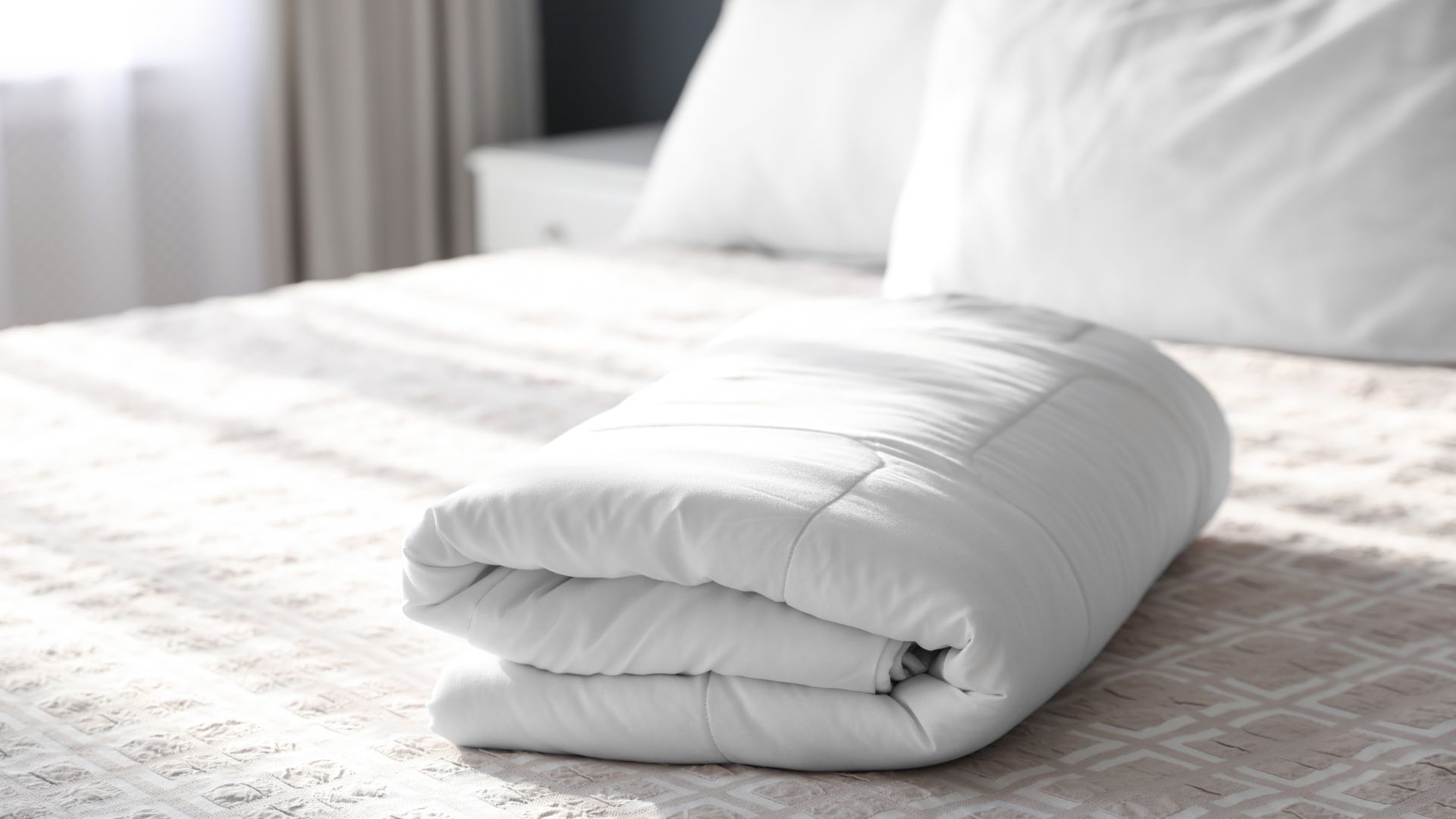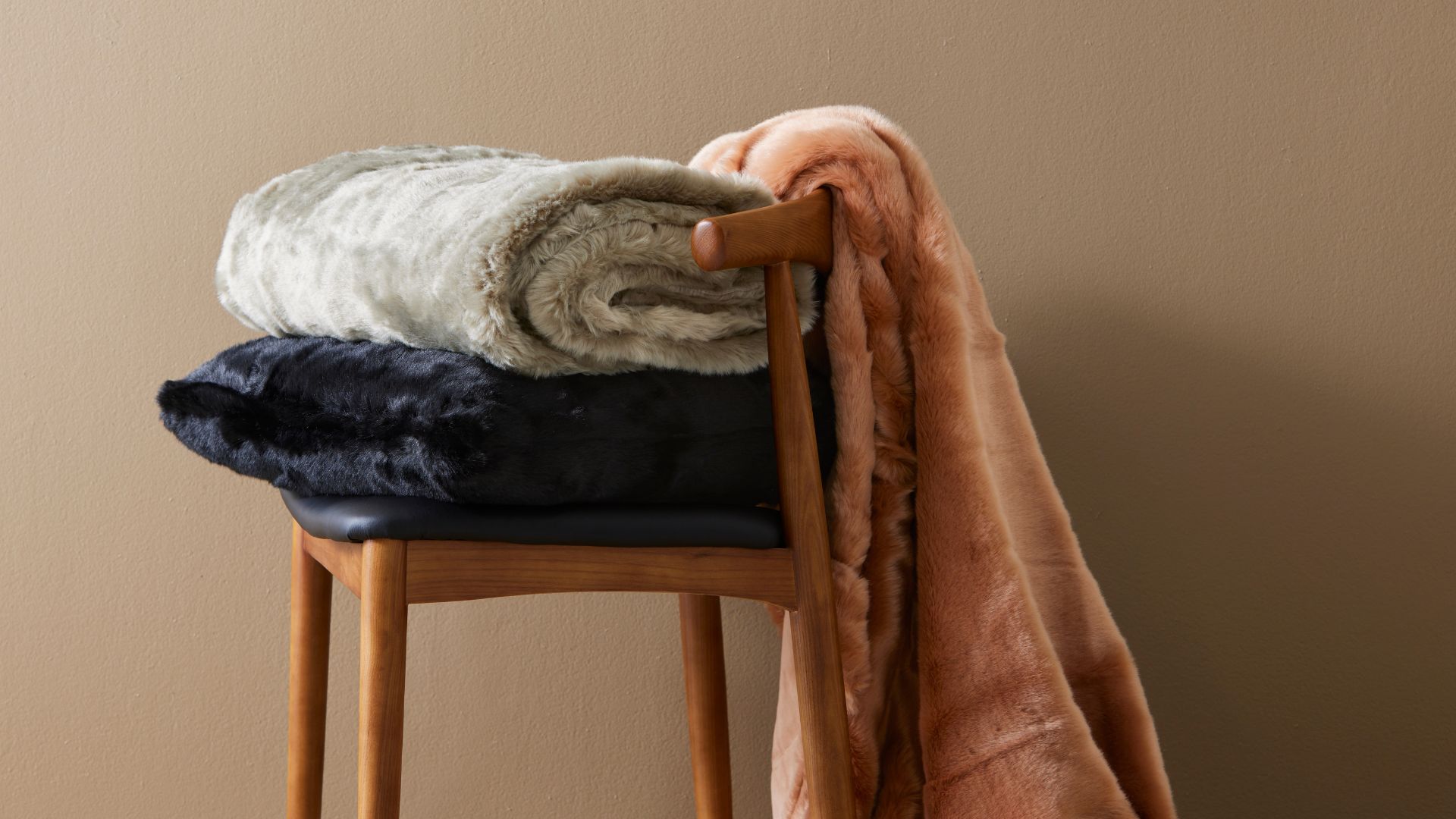| Your browser is not supported. | ||
|
Please browse our site using any of the following options:
| ||
What is a Weighted Blanket: The Ultimate Guide

In recent years, weighted blankets have gained immense popularity due to their remarkable benefits. People worldwide have discovered the value of these blankets in promoting a sense of calm, reducing anxiety, and improving sleep. The deep pressure stimulation provided by weighted blankets has been found to increase the production of serotonin and melatonin—neurotransmitters responsible for mood regulation and sleep-wake cycles. With their growing popularity, these blankets are no longer limited to therapeutic settings but are now widely available for personal use, helping individuals achieve a more balanced and rejuvenating lifestyle.
At the core of weighted blankets lies the aspiration to provide users with a simple yet effective tool to alleviate stress and embrace serenity. The following sections will delve deeper into the understanding, health benefits, and practical aspects of choosing and caring for weighted blankets, ensuring you have all the information necessary to embark on a journey of improved well-being.
Frequently Asked Questions
What is a weighted blanket?
Weighted blankets are specially designed with evenly distributed weights, typically glass beads or plastic pellets, to provide deep pressure stimulation and a gentle, comforting sensation when draped over the body. The purpose of these blankets is to promote relaxation, reduce anxiety, and improve sleep quality. The added weight mimics the feeling of a warm hug or a gentle, soothing touch, creating a calming effect that can benefit individuals of all ages.
Are weighted blankets suitable for everyone?
Weighted blankets are generally safe for most individuals; however, it's essential to consider individual needs and consult a healthcare professional if you have any specific concerns or medical conditions. Some individuals with respiratory or circulatory issues, limited mobility, or allergies may need to take extra precautions or seek personalised guidance.
Can children use weighted blankets?
Yes, children can use weighted blankets; however, it is crucial to ensure that the blanket is appropriate for their age, body weight, and developmental stage. Follow the size and weight guidelines recommended for children and supervise their use to ensure their safety.
How long should I use a weighted blanket each day?
The duration of weighted blanket use can vary depending on personal preferences and needs. Some individuals benefit from using a weighted blanket for a short period, such as 20-30 minutes, for relaxation or stress relief. Others may choose to use it throughout the night for improved sleep. Listen to your body and adjust the duration based on your comfort and well-being.
What's the heaviest weighted blanket?
Usually, weighted blankets weigh heavier than throws and other blankets - given that their construction incorporates glass beads. Typically blankets will weigh between 3kg-14kg depending on size.
Brief history and origins of weighted blankets
Weighted blankets have a rich history dating back to therapeutic practices such as deep-pressure and sensory integration therapy. Initially developed to aid individuals with sensory processing disorders, weighted blankets gained recognition for their therapeutic benefits and expanded to benefit a wider audience. Over time, weighted blankets have evolved, blending ancient wisdom with modern research to provide comfort and relief to those in need.
Understanding weighted blankets

Using the principle of deep pressure stimulation (DPS), weighted blankets apply firm, even pressure to the body. This pressure triggers the release of neurotransmitters like serotonin and dopamine, which promote feelings of relaxation and happiness while reducing stress and anxiety. The weight of the blanket also helps to calm the nervous system, providing a sense of security and grounding. When you snuggle under a weighted blanket, its gentle pressure distributes evenly across your body, stimulating the release of these "feel-good" chemicals. This can result in a soothing, comforting experience that can help you unwind, relax, and enjoy a more restful sleep.
Types of materials used in weighted blankets
Weighted blankets are crafted with careful attention to the materials used, ensuring both comfort and functionality. Here are some commonly used materials:
- Outer fabric: Weighted blankets often feature soft, breathable fabrics like cotton, bamboo, or plush fleece. These materials create a cosy and pleasant sensory experience.
- Weight fillers: The fillers inside weighted blankets are typically small, non-toxic beads made of glass or plastic. These beads are distributed evenly throughout the blanket's compartments, ensuring consistent weight distribution.
- Inner liner: Some weighted blankets include an inner liner made of sturdy material like cotton or polyester. The liner acts as an extra layer of protection and helps keep the beads securely in place.
Determining the weighted blanket weight
How heavy should a weighted blanket be? Here's a quick low down. Selecting the appropriate weight for your weighted blanket is crucial to experience its full benefits without feeling overwhelmed or uncomfortable.
- Most weighted blanket weight guides suggest that the weight of the blanket needs to be about 10% of your body weight. However, individual preferences may vary, and it's essential to consider personal factors such as age, physical condition, and pressure sensitivity.
- If you're new to weighted blankets or prefer a lighter touch, you may opt for a blanket of 7-10% of your body weight. Choose a blanket 10-12% of your body weight for a more substantial, deeper pressure. It's always advisable to consult the specific recommendations provided by the manufacturer or consult with a healthcare professional to determine the ideal weight for your unique needs.
Choosing the right weighted blanket
Factors to consider when selecting a weighted blanket
When choosing a weighted blanket, take into consideration the following to ensure the best fit for your needs:
- Body weight: As mentioned earlier, consider your body weight as a starting point for selecting the appropriate weight of the blanket.
- Age and developmental stage: Different age groups may have specific requirements for weighted blankets. Consider the developmental stage and consult size and weight guidelines for children and adults to ensure safety and optimal effectiveness.
- Sensory preferences: Reflect on your sensory preferences. Some individuals prefer a lighter touch, while others may find comfort in heavier pressure. Understanding your sensory needs and preferences can help you select a weighted blanket that provides the desired level of comfort and relaxation.
Tips for finding the suitable fabric and filling material
A weighted blanket's fabric and filling material are crucial for comfort and durability. Consider the following tips when selecting these components:
- Fabric: Look for soft, breathable fabrics like cotton or bamboo that feel pleasant against the skin. These materials promote airflow, preventing excessive heat retention during sleep.
- Filling material: Opt for high-quality fillers like glass beads or plastic pellets that distribute weight evenly. Ensure the filling material is non-toxic and securely contained within the blanket to prevent shifting or clumping.
- Additional features: Consider features such as removable covers for easy cleaning or customisable designs that allow you to personalise your weighted blanket according to your style and preferences.
Caring for weighted blankets

Proper cleaning and maintenance are essential to keep your weighted blanket in excellent condition. Here are some tips to help you care for your weighted blanket:
- Spot cleaning: Spot cleaning is often sufficient for minor stains or spills. Use a mild detergent or stain remover and gently dab the affected area with a clean cloth or sponge. Avoid rubbing vigorously, as it may damage the fabric or filler material.
- Professional cleaning: If the stain persists or you are unsure about cleaning it yourself, consider taking the weighted blanket to a professional cleaner specialising in handling delicate fabrics.
- Machine washing: Some weighted blankets are machine washable, while others may require hand washing. Follow the instructions provided by the manufacturer to ensure the best care for your specific blanket. If machine washing is suitable, use a gentle cycle with cold water and mild detergent. Avoid using bleach or harsh chemicals.
- Hand washing: If your weighted blanket requires hand washing, fill a basin or bathtub with cold water and mild detergent. Gently agitate the blanket in the water, ensuring the even distribution of detergent. Rinse thoroughly and squeeze out excess water without wringing or twisting the blanket.
- Drying: When drying your weighted blanket, follow the manufacturer's instructions. Some blankets can be tumble-dried on low heat, while others may need to be air-dried. Avoid high heat, as it can damage the fabric and filler material. Ensure the blanket is fully dry before using or storing it to prevent mildew or odours.
Extending the lifespan of a weighted blanket
Here are some tips to keep your weighted blanket in excellent condition:
- Use a duvet cover: Consider using a removable quilt cover to protect the weighted blanket from direct contact with oils, sweat, and dirt. The cover can be easily removed and washed, keeping the blanket fresh and clean.
- Store properly: When not in use, store the weighted blanket in a cool, dry place to prevent moisture and odours. Avoid exposing it to direct sunlight, as it can cause the fabric to fade or get damaged.
- Handle with care: Avoid excessive pulling or tugging on the blanket, as it may damage the stitching or cause the filler material to shift. Treat the weighted blanket gently to maintain its integrity.
- Periodic inspections: Regularly inspect your weighted blanket for any signs of wear and tear, loose threads, or damaged seams. Address any issues promptly to prevent further damage.
Choosing weighted blankets for good sleep
Weighted blankets have significantly impacted sleep and wellness, and their potential continues to grow. As researchers and designers explore new technologies and materials, one could expect advancements, leading to even more innovative and personalised options. The future of weighted blankets holds promise for addressing specific needs and preferences, ensuring a comfortable and tailored experience for every individual. So, take that leap and embrace the comfort of a weighted blanket. Discover the potential it holds to transform your sleep, reduce stress, and enhance your overall quality of life. Invest in your well-being and unlock the soothing benefits of a weighted blanket today from Harris Scarfe. We've also covered other bedding in detail on the Home Hub, including flannelette, cotton vs linen sheets, coverlets and doonas - to help you find everything you know and make an informed purchase decision. Sweet dreams await.